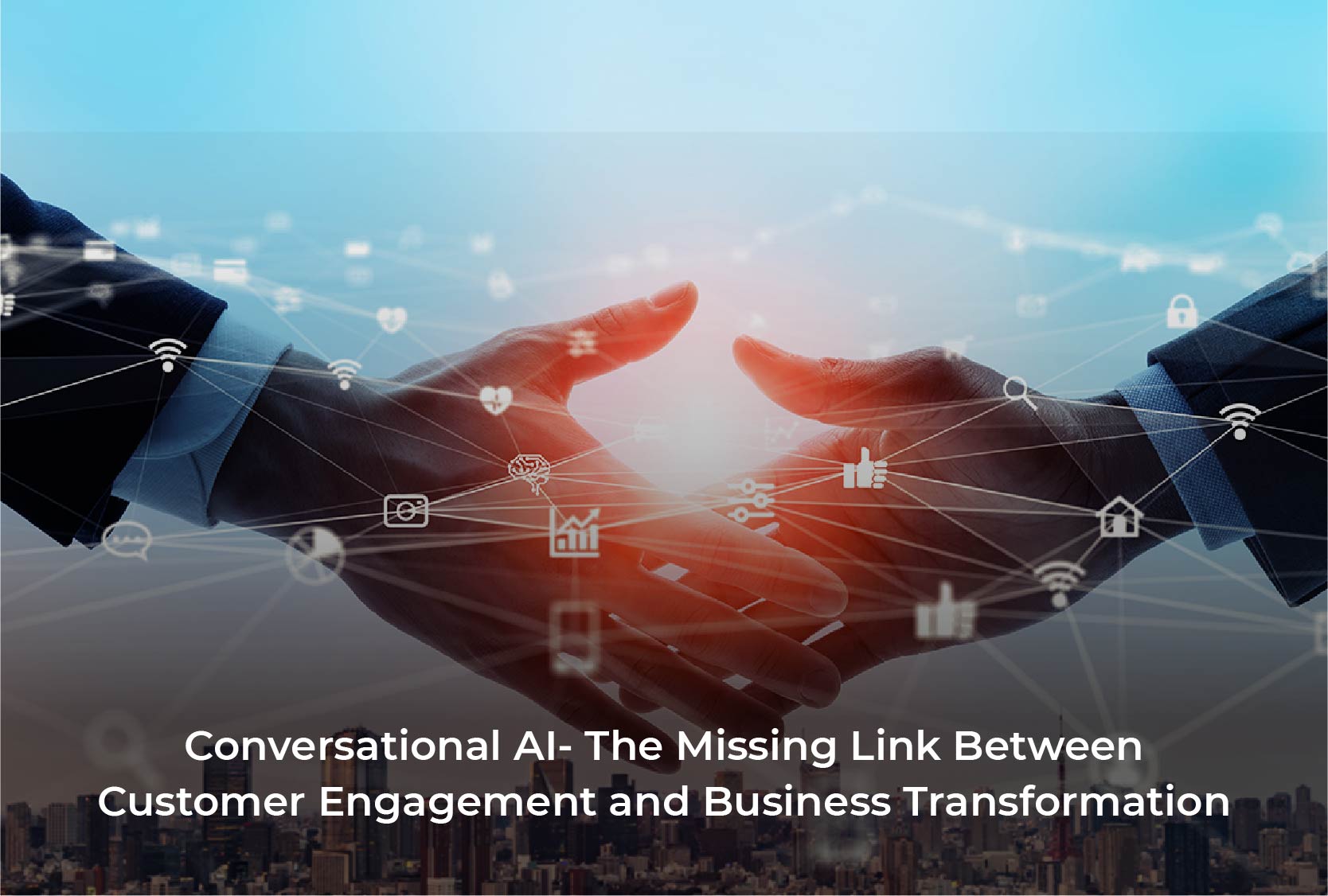Conversational AI refers to a defined set of technologies that enable human-like interactions between computers and humans through speech-enabled applications and automated messaging.
By detecting speech and text, deciphering different languages, interpreting intent, and replying in a fashion that mimics human conversation, conversational AI can easily converse like a human. And this has set new standards in the customer engagement market, slashing out all the complicated processes that create lag.
To create impactful applications that combine context, personalization, and relevance within human-computer interaction, applied conversational AI requires both science and art. Conversational design, a discipline that is dedicated to designing flows that sound simply natural, is a critical part of developing Conversational AI applications.
Though chatbots have suddenly risen in popularity (and a poor rep), Conversational AI and automation may be delivered through text and speech modalities and hence can be delivered through a variety of channels and devices – from SMS and webchat for text to phone calls and smart speakers for voice.
Conversational AI, at its best, produces results that are indistinguishable from those supplied by a human. Consider the last time you had communicated with a company and realized that you could have accomplished the same tasks by keeping the efforts same, if not less than if you had communicated with a human. That’s the pinnacle of Conversational AI.
Why is Conversational AI so popular in the era of high-end consumer expectations?
- 24*7*365 availability: Chatbots do not get tired or go on holiday. More than half of consumers in any business seek 24/7 availability. And Conversational AI can easily match up to these needs.
- Instant answers: All virtual assistants spend a fraction of a second preparing a response. Each AI chatbot can respond simultaneously to a huge number of users, unlike a human employee. Approximately 69% of customers do highlight quick responses from bots as a crucial business advantage.
- Patience without end: Many businesses aim to provide excellent service. However, some customers may require more patience from personnel. Because it lacks emotions, the chatbot is not affected by them. As a result, virtual assistants may answer queries indefinitely, repeating the same thing while remaining calm.
- Multi-language: Text or voice bots that can communicate in multiple languages are possible. It’s simply an issue of programming and configuration. This allows the company to attract more clients without having to hire multilingual workers.
- Cost-cutting: Virtual assistants, on average, save a company $0.70 on each individual client request, according to various estimates. And if you calculate the number of requests by day, month, and year, you’ll see that.
- Sales have increased: Sales climbed by 67 percent in organizations that successfully deployed conversational AI, according to studies. It’s worth noting that customers have faith in the AI bot’s conversation. About 22% of buyers purchase things based on its recommendations.
- Customer contact has increased: People enjoy interacting with chatbots, whether they are simple or complex. Customers are more familiar with the brand as a result of this. Nearly 80% of customers feel their interaction with an AI bot was favorable.
- Minimize human mistakes: Humans are not robots, and they are prone to making errors. Virtual assistants who have been properly trained do a good job with few faults. According to company statistics, real consumer communication with human agents declined by 70% last year as a result of the deployment of AI chatbots. You can imagine how much more precise business processes have become.
5 strategies that can make Conversational AI the CX Game Changer
- Choosing the appropriate use cases: Use cases that have the actual potential to impact consumer and employee experiences are the most powerful. Organizations that fail to spend time knowing their customers’ preferences and pain issues, on the other hand, frequently install technology that is ineffective. Conversational AI Solution, if incorporated incorrectly, can drive customers to other manual service channels, essentially shifting costs from one part of the organization to another.
- Aligning with the company’s goals: Conversational AI, like other strategic automation tools, requires a deliberate approach, setting objectives that correspond with company goals and tracking ROI. All too frequently, businesses can slip into the trap of experimenting with new technology before fully comprehending how it may solve a business problem. Conversational AI should focus on the most critical areas for improvement: enhancing NPS, raising retention rates, mitigating complaints, and bringing down expenses.
- Before you begin, resolve the data concerns: To learn and perform significantly, conversational AI systems require a large amount of high-quality data to overlay any AI solution, ensuring that you receive exceptional outcomes. Additionally, the more data there is, the easier it is to create models that can effectively analyze and interpret speech. For companies who aren’t up to date on their data architecture, this can be a problem.
- Define your company’s objectives: The first and most important component of the chatbot strategy is to define the purpose or objectives. To maximize chatbot benefits for your business, visualize the best-case scenario for the audience and the actions you want them to do to achieve the experience. Bots are typically used by corporations to increase sales, automate customer service, or improve their online presence. You should also integrate your chatbot strategy with the needs of your clients.
- Make trip maps for your customers: For the use cases that are within the scope of work, a good bot strategy must give a positive customer experience. When it comes to customer experience management, customer journey mapping is critical. It assists businesses in determining how to provide a better overall experience that leads to enhanced customer happiness and loyalty.
The overall idea is to build an experience that delights your consumers as well as better results using a bot as an additional channel.
Conclusion:
If done correctly, conversational AI can provide genuine commercial benefits. And, yes, it is truly rewriting the rules of customer engagement. Companies are becoming more and more accessible as we go toward a future of low-code, no-code software. The move to cloud-based systems like Microsoft Azure, Amazon Web Services, and Google Cloud has made software as a service more accessible and faster.
AutomationEdge’s Conversational AI and Automation solutions can help you achieve the desired customer satisfaction. With these advanced technologies, businesses may more simply implement conversational AI and reap the benefits of increased customer service and revenue sooner. Working with a conversational AI expert like AutomationEdge, on the other hand, will ensure that your project achieves the desired commercial goals.
So, want to transform your business with Conversational AI and automation, Contact Us!

